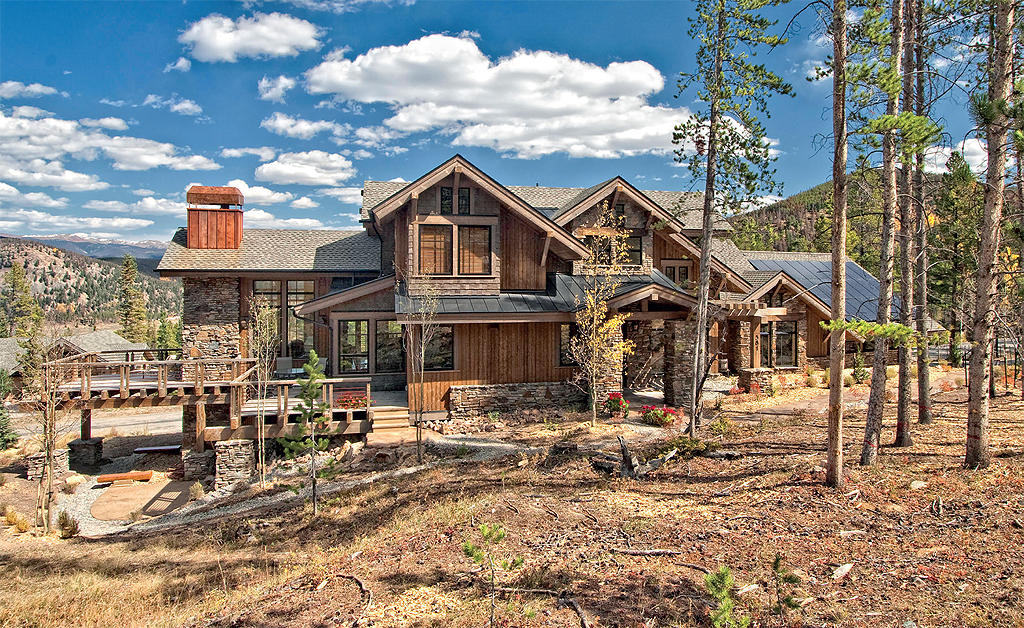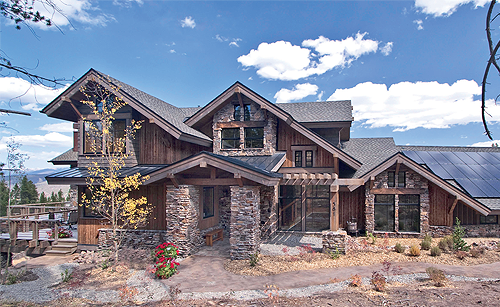
Getting it just right
With an ever-evolving need to resolve manmade environmental issues, sustainable design and building can play an integral role in creating a logical path forward for mankind and the environment.
It is important to take into consideration the methods in which we are building and designing and how sustainable design practices can influence our process from start to finish and beyond. There are many benefits of sustainable design and building as it raises the bar by addressing efficiency in energy, water conservation, site selection, material choices, and affecting the overall performance of the home.
Understanding the parallel between active and passive energy is critical. Energy efficiency is the most cost-effective strategy for reducing heating and cooling bills. In addition, Passive Design takes advantage of a building’s site, climate, and materials to minimize energy consumption. A well-designed passive home first reduces heating and cooling loads through energy-efficient strategies and then supplements the reduced loads with solar or geothermal energy. As important as it may be to avoid too many north facing windows in cooler climates, it is also especially  important to avoid oversizing south-facing glass and ensure that south-facing glass is properly shaded to prevent overheating and increased cooling loads in the warmer months.
important to avoid oversizing south-facing glass and ensure that south-facing glass is properly shaded to prevent overheating and increased cooling loads in the warmer months.
Active Design strategies usually consist of heating and cooling systems: Solar Panels, etc. while Passive sustainable design measures include building orientation, air sealing, continuous insulation, windows and daylighting, and designing a building to take advantage of natural ventilation opportunities – both are very beneficial in their own ways.
Furthermore, Passive Residential Home Design strategies will prioritize the use of ambient energy sources instead of purchased energy like electricity or natural gas. Active design strategies will prioritize purchased energy or products to keep the building comfortable.
Although conceptually simple, a well-designed and successful passive solar home requires that several details and variables come into balance. An experienced design team will use a computer model to simulate the details of a passive solar home in different configurations until the design fits the site selected as well as the owner’s budget, aesthetic preferences, and performance requirements.
Some of the elements the design team will consider include: insulation and air sealing, window location, glazing type, window shading, thermal mass location and type, and auxiliary heating and cooling systems.
A technically trained team of Architects, Engineers, and Designers will apply these elements using passive solar design techniques that include direct gain, indirect gain, and isolated gain.
In planning how to use the sun to help heat a structure, it is important to emphasize direct gain design which allows sunlight to enter the home through south-facing windows, actively warming the space as it enters.
The most common Indirect Gain approach is a Trombe wall which can play a role in the sustainability of a space. A properly designed Trombe wall consists of an 8-inch to 16-inch thick masonry wall on the south side of a house. A single or double layer of glass mounted in front of the dark-colored wall absorbs solar heat, which is stored in the wall’s mass. The heat migrates through the wall and radiates into the living space while heat travels through a masonry wall at an average rate of one inch per hour. In other words, the heat absorbed by an 8-inch thick concrete wall at noon will re-enter the interior living space around 8 pm. As the room cools during the night, the thermal mass from the Trombe Wall releases heat into your home which lightens the load on the home’s heating system. Furthermore, water features can also absorb and store twice as much solar heat as masonry materials per cubic foot of volume.
Now, we can also take Isolated Gain into consideration. A common Isolated Gain passive solar home design is a sunspace (examples: sunroom, solar room, or solarium) that can be closed off from the house with doors, windows, and other operable openings.
The unprecedented year of 2020 has brought many new trends to the forefront. For example, the Goldilocks Home will be at the top of this list. In other words, the home that ‘fits just right’ – it is not too big; it is not too small. It is not too hot, it is not too cold!
For residential design build projects seeking an optimal sustainable result, 3D Design Software is an essential and cost effective tool. This technology allows you to evaluate your clients site selection and maximize its capabilities. Embracing a large scale commercial construction approach to a singular custom building process is a unique method that will continue to grow. While most residential custom home builders are still working off of 2D blueprints, if applied more frequently, this updated method can lead to a variety of overall benefits. The goal will be to include as many passive design strategies as possible into each project before you ever break ground for construction. Additionally, passive design strategies tend to save on budget while active strategies tend to add a cost element into the overall project budget.
In order to provide the best-case scenario for your project to meet sustainable standards, consider involving your Build Team in Architectural Design Meetings. Integrative and Collaborative Design with all the key stakeholders involved as early as possible can bring in-field experience as well as technical knowledge to the table before a shovel ever hits the dirt.
It is also important to invest in the use of innovative 3D virtual technology and BIM software with the purchase of your Architectural Drawing Set. 3D Technology is the closest thing on the market to a crystal ball for predicting your project and minimizing issues on-site. The performance and efficiency of a yet-to-be built structure and for minimizing issues during construction and during the life cycle of the structure.
Lastly, take your time during the design process with your team to explore multiple options to the best solutions for your home. Good Design is a process.
Beware of intensely marketed products labeled liberally as ‘Green’ or ‘Sustainable’. Likewise, don’t believe that a sustainably designed home must cost a premium! Good Design does not have to cost more. You should also be careful not to overbuild. Instead, customize your home to cater to your family’s needs and lifestyle. Incorporate multi-use & flex spaces into your home. The Goldilocks Home – it fits you just right.
Overall, focusing on sustainable methods can help buildings consume fewer resources and will ultimately increase value, create healthier environments for future generations, and reduce carbon emissions. This is the future of building and design and you can still think outside of the box to get there!
Paige Ramsey is an Interior Designer and LEED Green Associate at Trilogy Partners, a concierge Design+Build company located in the heart of the Rockies. Through our unique and innovative Project Management Modeling you will see and experience your home’s exterior and interior through virtual 3D technology before construction ever starts. We hire the team and are with you every step of the way to design and construct your dream home.
https://trilogybuilds.com